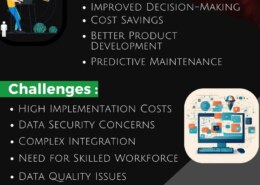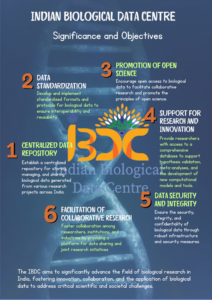Analyze how public-private partnerships have accelerated the creation and uptake of new technologies in India to help solve urgent social and environmental issues.
Indian start-ups and entrepreneurs face several challenges in the development and commercialization of innovative technologies. These challenges span across various stages of the start-up lifecycle, from initial ideation to scaling up. Here’s an analysis of these challenges and the interventions neeRead more
Indian start-ups and entrepreneurs face several challenges in the development and commercialization of innovative technologies. These challenges span across various stages of the start-up lifecycle, from initial ideation to scaling up. Here’s an analysis of these challenges and the interventions needed to address them:
**1. Challenges Faced by Indian Start-ups
**a. Access to Funding
Overview:
- Early-Stage Funding: Start-ups often struggle to secure initial funding due to high risk and uncertainty.
- Scaling Up: Access to growth capital is limited, affecting the ability to scale operations and expand market reach.
Challenges:
- Risk Aversion: Investors may be risk-averse, preferring more established ventures over high-risk start-ups.
- Funding Gaps: There is a gap between seed funding and venture capital, leading to difficulties in transitioning from start-up to scale-up stages.
**b. Regulatory and Compliance Issues
Overview:
- Complex Regulations: Navigating complex regulatory environments can be challenging for start-ups.
- Compliance Costs: Meeting compliance requirements can be costly and time-consuming.
Challenges:
- Bureaucratic Hurdles: Start-ups may face bureaucratic delays and complexities in obtaining licenses and approvals.
- Changing Regulations: Frequent changes in regulations can create uncertainty and additional compliance burdens.
**c. Talent Acquisition and Retention
Overview:
- Skill Shortages: Start-ups often struggle to find skilled talent in specialized areas such as technology and innovation.
- Retention Issues: High attrition rates can affect the stability and growth of start-ups.
Challenges:
- Competitive Market: High competition for skilled professionals can drive up salaries and make it difficult for start-ups to attract and retain talent.
- Skill Mismatch: There may be a mismatch between the skills available in the job market and those required by start-ups.
**d. Infrastructure and Resources
Overview:
- Access to Resources: Limited access to infrastructure and resources can hinder the development and commercialization of technologies.
- Innovation Ecosystem: An underdeveloped innovation ecosystem can restrict collaboration and support.
Challenges:
- Cost of Infrastructure: The cost of setting up and maintaining infrastructure can be prohibitive for start-ups.
- Lack of Support Networks: Limited access to innovation hubs, incubators, and accelerators can impact start-ups’ growth.
**e. Market Access and Customer Acquisition
Overview:
- Market Penetration: Gaining market traction and reaching customers can be difficult for start-ups.
- Competition: Established players and competitive market conditions can pose challenges.
Challenges:
- Market Awareness: Start-ups may struggle with brand recognition and market visibility.
- Customer Trust: Building customer trust and credibility can take time and resources.
**f. Intellectual Property and Innovation Protection
Overview:
- IP Management: Protecting intellectual property and managing patents can be challenging for start-ups.
- Innovation Risks: Risk of intellectual property theft and infringement.
Challenges:
- IP Costs: High costs associated with patent filings and legal protection.
- Enforcement Issues: Difficulty in enforcing intellectual property rights and preventing infringement.
**2. Interventions Required
**a. Enhanced Funding Mechanisms
Interventions:
- Funding Ecosystem: Develop a robust funding ecosystem that includes seed funds, venture capital, and government grants.
- Angel Networks: Encourage the growth of angel investor networks and crowd-funding platforms.
Examples:
- Start-up India Scheme: Government schemes to provide funding support and incentives for start-ups.
- Venture Capital Funds: Expansion of venture capital funds focused on technology and innovation.
**b. Regulatory Reforms
Interventions:
- Simplified Processes: Streamline regulatory processes and reduce bureaucratic hurdles.
- Policy Support: Implement policies that support start-ups, such as tax incentives and simplified compliance requirements.
Examples:
- Ease of Doing Business: Reforms aimed at improving the ease of doing business and reducing regulatory burdens.
- Startup India Action Plan: Initiatives to simplify regulatory procedures and provide a supportive legal framework.
**c. Talent Development and Retention
Interventions:
- Skill Development Programs: Promote skill development and training programs in partnership with educational institutions and industry.
- Incentive Structures: Create incentive structures to attract and retain talent in start-ups.
Examples:
- Skill Development Initiatives: Government and private sector programs to enhance skills in emerging technologies.
- Employee Stock Options: Offering stock options and other benefits to retain key talent.
**d. Infrastructure and Resource Support
Interventions:
- Innovation Hubs: Develop innovation hubs, incubators, and accelerators to provide infrastructure and support.
- Resource Sharing: Facilitate access to shared resources such as labs, co-working spaces, and technical support.
Examples:
- Incubation Centers: Establishment of incubation centers and technology parks to support start-ups.
- Public-Private Partnerships: Collaborations between government and private sector to enhance infrastructure and resources.
**e. Market Access and Customer Support
Interventions:
- Market Linkages: Support start-ups in accessing new markets and building customer relationships.
- Marketing Assistance: Provide marketing and branding support to enhance market visibility.
Examples:
- Export Promotion Schemes: Government programs to support start-ups in entering international markets.
- Marketing Grants: Grants and support for marketing and promotion activities.
**f. Intellectual Property Protection
Interventions:
- IP Support Services: Provide support services for intellectual property management, including patent filing and legal assistance.
- Awareness Programs: Raise awareness about intellectual property rights and protection strategies.
Examples:
- IP Facilitation Centers: Establishment of centers to assist start-ups with IP management and protection.
- IP Training Workshops: Workshops and seminars on intellectual property for start-ups and entrepreneurs.
Conclusion
Indian start-ups and entrepreneurs face a range of challenges in the development and commercialization of innovative technologies, including access to funding, regulatory hurdles, talent acquisition, infrastructure limitations, market access, and intellectual property protection. Addressing these challenges requires a comprehensive approach involving enhanced funding mechanisms, regulatory reforms, talent development, infrastructure support, market access assistance, and intellectual property protection. By implementing these interventions, India can foster a more conducive environment for innovation, support start-ups in overcoming barriers, and accelerate the growth of its technology-driven economy.
See less



Role of Public-Private Partnerships (PPPs) in Accelerating the Development and Adoption of New Technologies in India Public-Private Partnerships (PPPs) play a crucial role in addressing pressing social and environmental challenges in India by leveraging the strengths of both sectors. Here’s a criticRead more
Role of Public-Private Partnerships (PPPs) in Accelerating the Development and Adoption of New Technologies in India
Public-Private Partnerships (PPPs) play a crucial role in addressing pressing social and environmental challenges in India by leveraging the strengths of both sectors. Here’s a critical examination of their role, including recent examples:
Enhancing Technological Innovation
Role of PPPs: PPPs facilitate the development of new technologies by combining public sector resources with private sector innovation and expertise. This collaboration helps in overcoming financial and technical barriers that might hinder the development of new solutions.
Recent Example: The National Biopharma Mission (NBM) is a prominent PPP that aims to advance the development of biopharmaceuticals. In 2023, this mission supported collaborations between the government and private firms like Biocon and Serum Institute of India to develop and manufacture vaccines and therapies.
Critical Analysis: While NBM has accelerated the development of critical vaccines and therapies, challenges such as bureaucratic delays and alignment of objectives between public and private stakeholders can impact project timelines.
Accelerating Technology Adoption
Role of PPPs: Through PPPs, new technologies can be rapidly adopted and scaled by leveraging the distribution networks and market reach of private companies along with public sector support.
Recent Example: The Deen Dayal Upadhyaya Gram Jyoti Yojana (DDUGJY), a PPP initiative aimed at improving rural electrification, has seen private firms working alongside government agencies to deploy solar energy solutions in remote areas. In 2023, this program facilitated the installation of solar-powered systems in villages across Rajasthan and Uttar Pradesh.
Critical Analysis: While the program has expanded energy access, issues such as maintenance and long-term sustainability of installed systems require ongoing attention to ensure lasting benefits.
Addressing Environmental Challenges
Role of PPPs: PPPs are instrumental in developing and implementing technologies that address environmental issues, such as pollution control and waste management, by combining public regulatory frameworks with private sector efficiency.
Recent Example: The Swachh Bharat Mission (SBM) incorporates PPPs to enhance waste management through technological innovations. In 2023, private companies like L&T and Ramky Enviro Engineers collaborated with municipal authorities to implement advanced waste segregation and processing technologies in major cities.
Critical Analysis: While SBM has made significant strides in improving waste management, challenges such as ensuring uniform implementation and addressing local resistance remain areas for improvement.
Promoting Social Welfare
Role of PPPs: PPPs can drive social welfare by developing and deploying technologies that improve health, education, and other social services, leveraging the strengths of both sectors.
Recent Example: The Ayushman Bharat Digital Mission (ABDM) is a PPP aimed at digitizing healthcare records and improving access to medical services. In 2024, partnerships between the Ministry of Health and private tech firms such as Tata Consultancy Services (TCS) facilitated the development of a nationwide digital health ecosystem.
Critical Analysis: The ABDM initiative has enhanced healthcare access and efficiency. However, data privacy concerns and integration challenges across various states need to be addressed to maximize the impact of this initiative.
Facilitating Infrastructure Development
Role of PPPs: PPPs play a critical role in developing infrastructure necessary for technology deployment, such as broadband networks and transportation systems, which are essential for scaling new technologies.
Recent Example: The BharatNet project aims to provide high-speed broadband connectivity to rural areas through PPPs. In 2023, partnerships between the government and private telecom operators, such as Bharti Airtel and Reliance Jio, expanded connectivity in underserved regions.
Critical Analysis: While BharatNet has improved connectivity, challenges such as ensuring consistent service quality and addressing logistical issues in remote areas need ongoing focus.
Conclusion
Public-Private Partnerships (PPPs) are instrumental in accelerating the development and adoption of new technologies to address pressing social and environmental challenges in India. By leveraging the strengths of both public and private sectors, PPPs facilitate innovation, enhance technology adoption, address environmental issues, promote social welfare, and support infrastructure development. Despite their significant contributions, challenges such as alignment of goals, sustainability, and implementation consistency remain. Addressing these challenges through improved coordination and strategic planning will be crucial for maximizing the impact of PPPs in tackling India’s complex issues.
See less